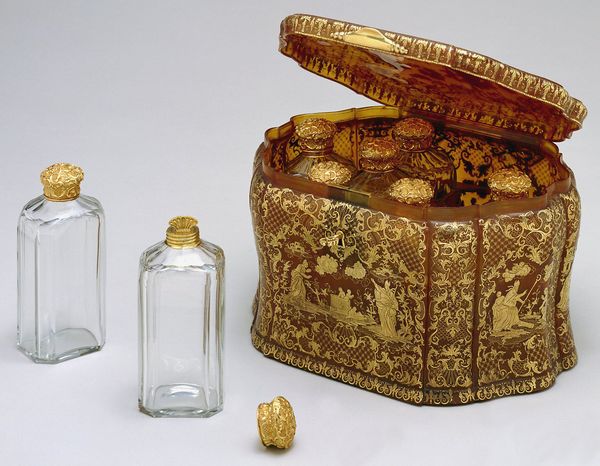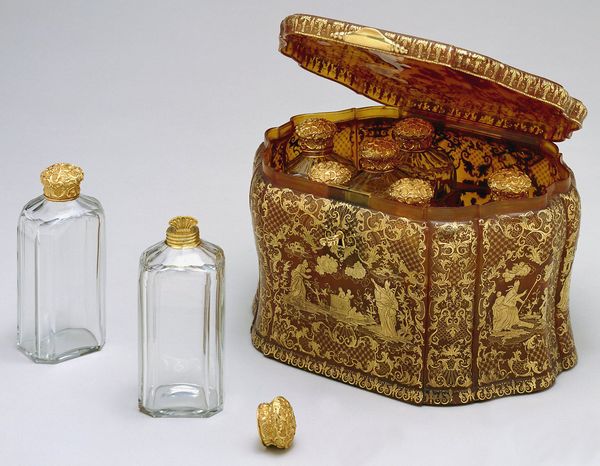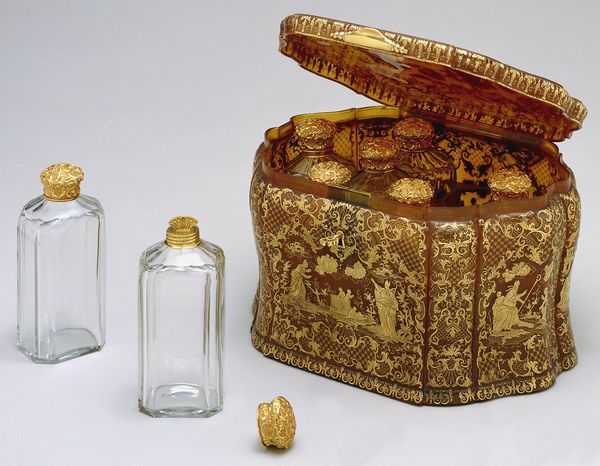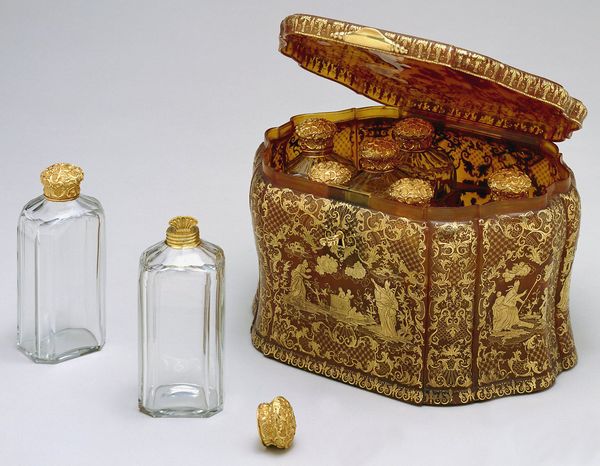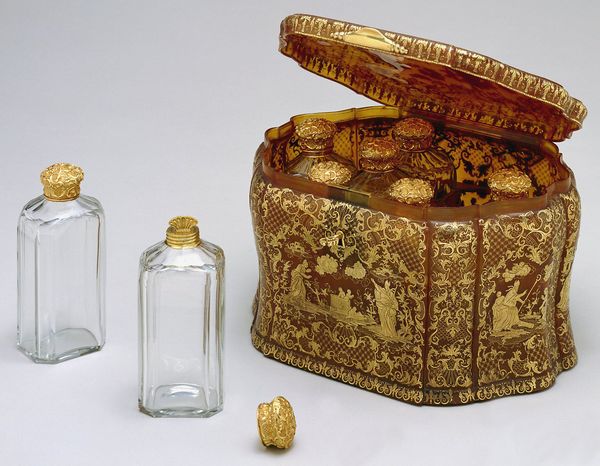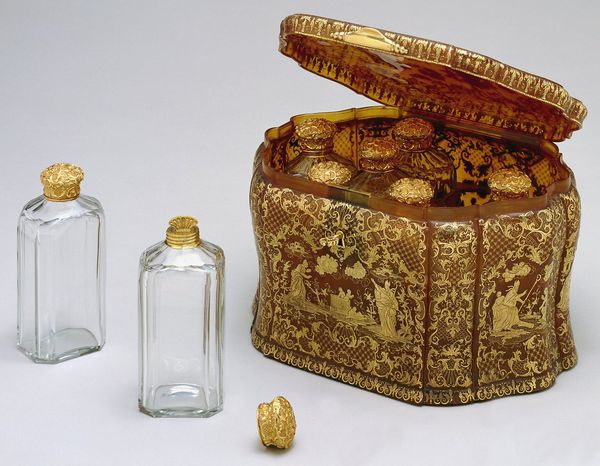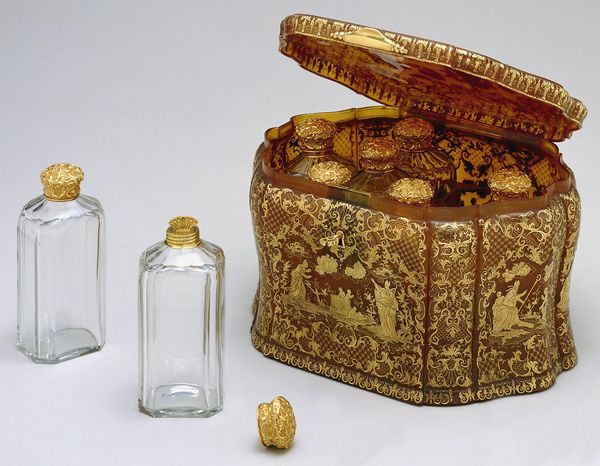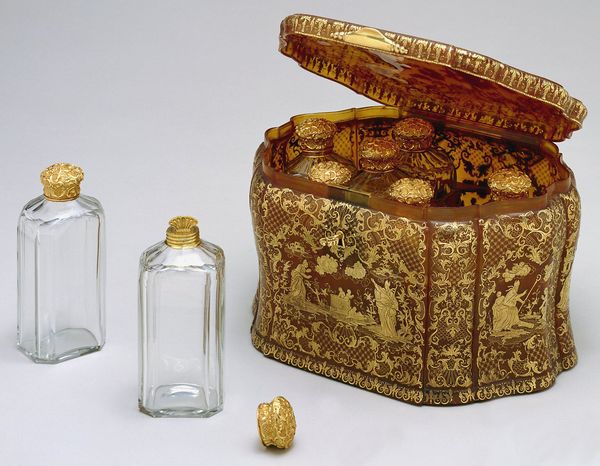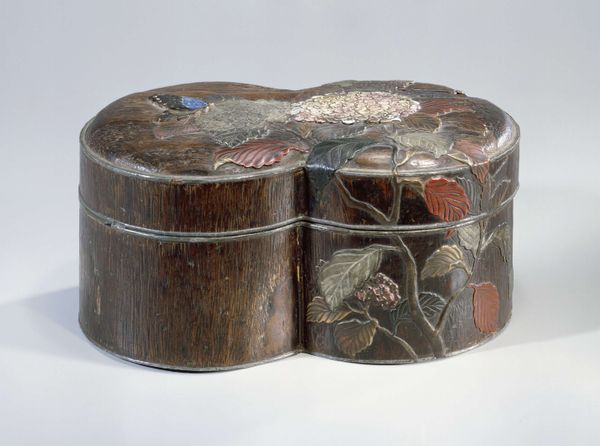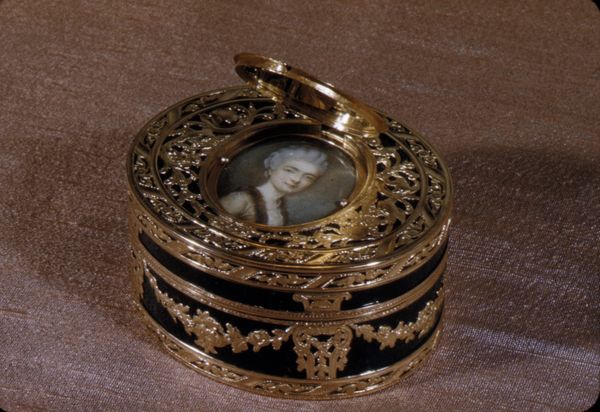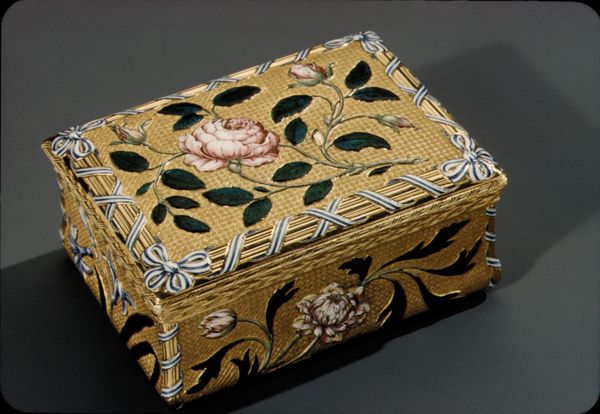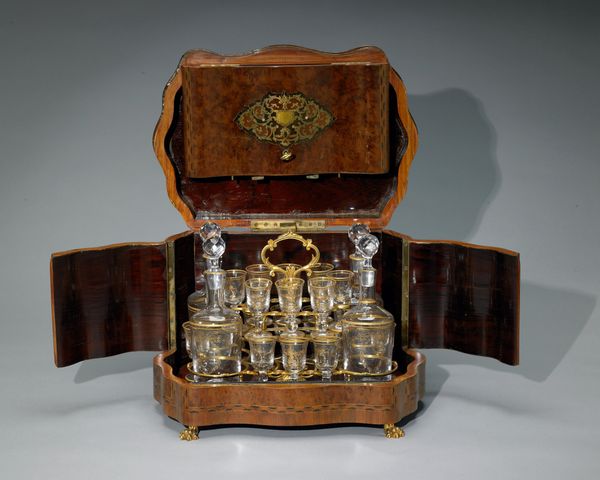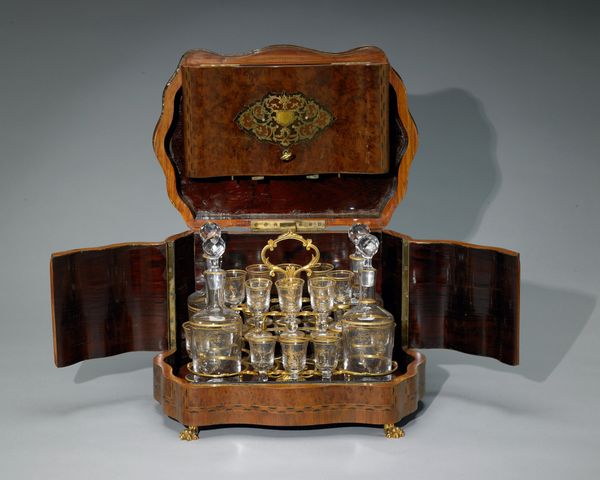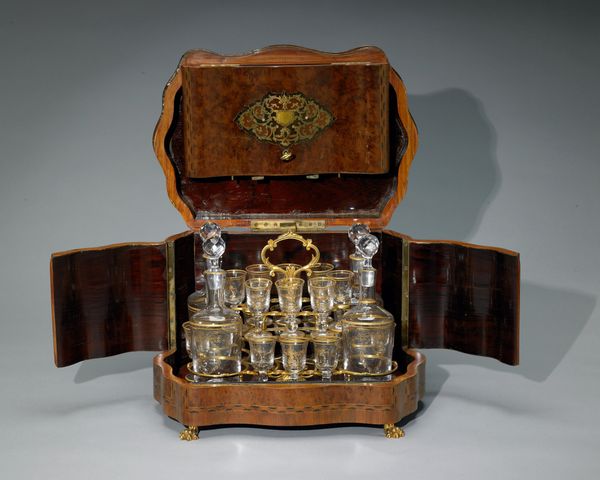
glass
#
glass
#
ceramic
#
decorative-art
#
rococo
Copyright: Public Domain
Editor: We're looking at a "Glass Bottle" from around 1745, currently residing at the Minneapolis Institute of Art. The delicate container and boxy case seem intended for a lady's toiletries, or perhaps cosmetics. What immediately jumps out at me is the elaborate, ornate Rococo style. How would you interpret the aesthetic choices made here? Curator: Oh, this isn't just a bottle; it’s a statement! Imagine its original owner, perfumed and powdered, carefully selecting from these vials. The amber glass, swirling like caramelized sugar, hints at luxury. It's the kind of thing Marie Antoinette might have adored – all showy and sweet. And look closely: what do you notice about the gilded scenes on the box? Editor: I see classical figures. Perhaps stories from mythology or the Bible? They almost look miniature, amidst all the swirls and flourishes. Curator: Precisely. The artist is cleverly blending the everyday — holding perfumes — with the eternal, invoking grand narratives on a miniature stage. It’s both functional and aspirational. It’s also fragile isn’t it? Knowing that these things barely survive always strikes me with awe. Does it spark your own stories? Editor: Absolutely! It makes me think about the value we place on both luxury and storytelling, and how even ordinary objects can become imbued with such rich cultural significance. I hadn't considered it as "fragile," but your insights encourage a slower appreciation. Thank you! Curator: My pleasure! Each object whispers secrets if you lend an ear.
Comments
minneapolisinstituteofart almost 2 years ago
⋮
The box is decorated with scenes from the life of St. Nicholas of Myra. This fourth century Greek bishop, who was the patron saint of children, sailors and travelers and the guardian of young women, was the forerunner of St. Nicholas or Father Christmas. The gold scenes were applied in a piqué technique whereby thin sheets of gold are impressed into tortoiseshell which has been softened in boiling water and olive oil. Once the shell cools, it contracts and the gold is securely held in place. This technique was first introduced at the end of the sixteenth century in Naples, and by the following century it had spread to France, England and northern Europe, with Paris and Naples as the principal centers. The costly and time-consuming nature of this intricate technique imply that it was used on only the most expensive small luxury items such as inkstands, trays, snuffboxes and boxes for toilet articles, in this case gold-mounted perfume bottles.
Join the conversation
Join millions of artists and users on Artera today and experience the ultimate creative platform.
